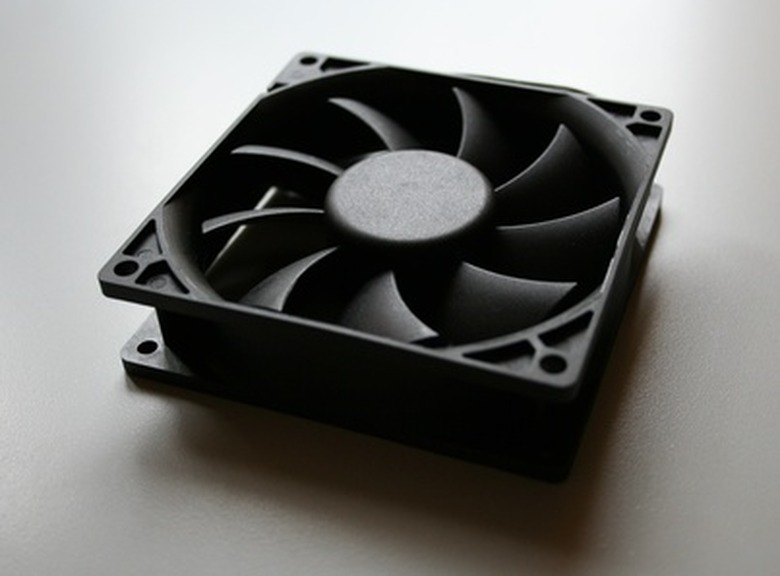The Functions Of A Radiator Fan
The radiator fan has an important job in the engine compartment. It can push air through the radiator core or pull it through. It must cool the antifreeze that circulates through the block and head passages and reduces the engine temperature. Fan designs have specific purposes for different sized vehicles and profiles. They all have the same basic function, which amounts to drawing in extra air, but especially at low rpm conditions and times when the vehicle sits at an idle.
Manual Fixed Fan
Manual Fixed Fan
The manual fixed fan is the oldest auto-fan design and comes with a four-blade pattern. The fan get its driving power directly off a pulley, powered by a belt from the crankshaft. It spins constantly, never stopping. Therefore, it draws air, pulling it through the radiator from the outside, during slow and fast speeds. It has no clutch to disengage it, nor does it have a variable pitch feature on its blades.
The Thermal Sensing Clutch Fan
The Thermal Sensing Clutch Fan
The clutch fan is comprised of a disk-like housing that forms the hub of the fan, and sits in front of the water pump. Driven by a pulley (like the manual fan), the insides of the clutch has fluid that produces internal friction that couples with a bi-metallic sensor similar to a thermostat. When the engine rpm has lowered enough, the sensor picks up the signal and engages the clutch, which locks with the fan. The fan will activate much more so at idling and lower speeds. When the car has approached higher speeds where the air has a "ramming" effect on the radiator, the fan shuts off because it does not have to be used. The fan clutch system saves horsepower from the engine by taking away unneeded drag.
Electric Fans
Electric Fans
Electric fans have their advantages when it comes to small import and compact cars, where size is the main consideration. Small and powerful, multiple electric fans can be mounted either in front of the grill to push air or behind the radiator to pull in air. They can be mounted at off-angles in the engine compartment, so long as they assist in cooling the radiator. Most electric fans come equipped with thermal-sensors that activate the fan when it reaches a hot temperature. They sometimes run after the engine has been shut off to bring the temperature back to normal specifications. Some of the better electric fans can push over 3,000 cubic feet of air per minute and have ten blades.
Flex Fans
Flex Fans
Flex fans have a light weight construction with a steel hub that supports riveted aluminum alloy blades. The blades have a radical pitch to them, and as the rpm increases the blades begin to flatten out, taking up less air drag and pull on the fan motor. They operate smoother with less noise and vibration than typical blades. The flex fan has gained popularity in the high-performance car and racing circuit.
Centrifugal Clutch Fan
Centrifugal Clutch Fan
The centrifugal clutch has to depend upon the speed of the engine to engage or disengage it. As the engine speeds up, the clutch allows the fan to partially slip, giving back that engine the power it would have used if permanently attached. When the speed reduces, the clutch locks into position, which engages the fan. One of the problems here might be with a vehicle stuck in the mud with a high-revving engine, which would trigger a no-fan condition, thus over-heating the engine since the vehicle cannot move through the airstream.
Cite This Article
MLA
Stevenson, Chris. "The Functions Of A Radiator Fan" sciencing.com, https://www.sciencing.com/list-6945043-functions-radiator-fan/. 7 August 2017.
APA
Stevenson, Chris. (2017, August 7). The Functions Of A Radiator Fan. sciencing.com. Retrieved from https://www.sciencing.com/list-6945043-functions-radiator-fan/
Chicago
Stevenson, Chris. The Functions Of A Radiator Fan last modified March 24, 2022. https://www.sciencing.com/list-6945043-functions-radiator-fan/
